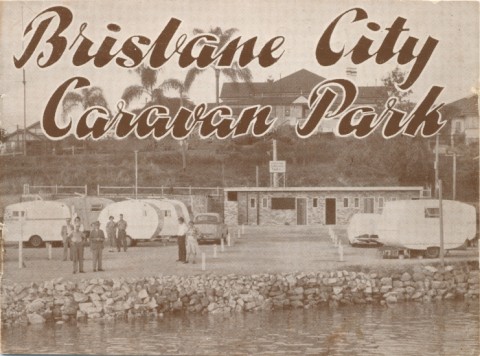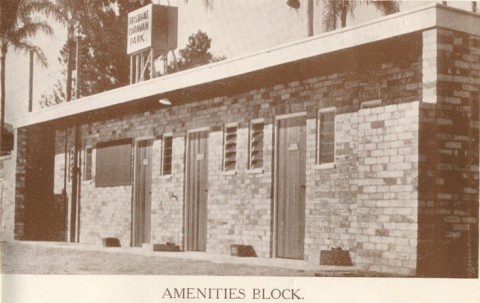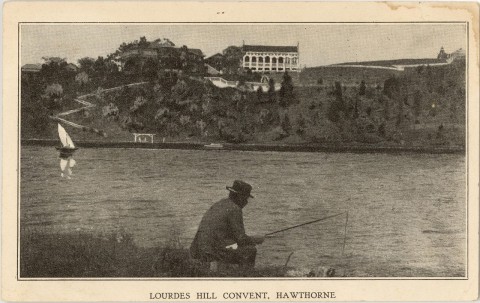Hawthorne, a residential suburb facing New Farm across the Brisbane River, is three km north-east of central Brisbane. The distance by road (Victoria Bridge, Wynnum Road, Hawthorne Road) is considerably further.
The land that became Hawthorne was purchased by William Baynes in 1875, who had come to Brisbane in 1859 from the Melbourne suburb of Hawthorn. The Baynes family had substantial livestock and butchering interests in South Brisbane and Belmont.
In 1885 land subdivisions in Bulimba and Hawthorne were sold, but settlement tended to concentrate in Bulimba which had a ferry service (1886) which was connected to a horse tram across the river at Teneriffe in 1887. By contrast, the Hawthorne Ferry was without the connecting Merthyr Road tram service until 1900. Public transport tended to bypass Hawthorne: the Cleveland railway line (1889) went to Norman Park but then veered away to the east; and a tram service extension along Wynnum Road and Riding Road (Hawthorne's eastern border) did not occur until 1925.
The post office directory in 1913 showed Hawthorne as a sparsely settled area, and a post office/store in Hawthorne Road constituted the area's commercial centre. A few hundred metres away, along the river's edge, a ridge of hills was chosen by the Convent of the Good Shepherd as the site for its Lourdes Hill College (1916), and urbanisation began at about that time. Hawthorne Road became Hawthorne's main thoroughfare and by 1924 had several stores, the Hawthorne Hall, a Presbyterian church and the partially roofed Hawthorne picture theatre. In 1924 the Balmoral Shire council had a design prepared for a ferry terminal at Scott Street, and the building was erected by Brisbane City Council in 1925. The tram line skirted Galloways Hill at the south of the ridge line and went onto Riding Road by way of reaching Hawthorne (1925). The large (6.9 ha) Hawthorne Park was reserved by the Balmoral Divisional Board.
The hilly southern part of Hawthorne is above recorded flood levels (apart from a narrow shoreline) but the northern part is susceptible where water can back up Pashen Creek as far as Barton Road. Most of the housing, however, is interwar Queenslanders, and owners on the loftier sites created something of a local record for home renovation spending in 2004. The large sites accommodate plenty of upstairs and downstairs rooms. Homeowners seem to have the income level to indulge on spending: the median income per resident in 2001 was 25% above the median for metropolitan Brisbane, over $100 better than Bulimba and only $15 short of Balmoral's $537 a week. The Hawthorne community also keeps the local triple-screen cinema going in Hawthorne Road.
The Hawthorne cross-river ferry from the heritage-listed terminal takes river passengers to Newstead instead of Teneriffe, and the City Cat service takes passengers up and down stream.
FLOODS 2011
Hawthorne's census populations have been:
| Census Date | Population |
|---|---|
| 1911 | 143 |
| 1921 | 1502 |
| 1976 | 3975 |
| 1986 | 3493 |
| 2001 | 3911 |
| 2006 | 4309 |
| 2011 | 4775 |



